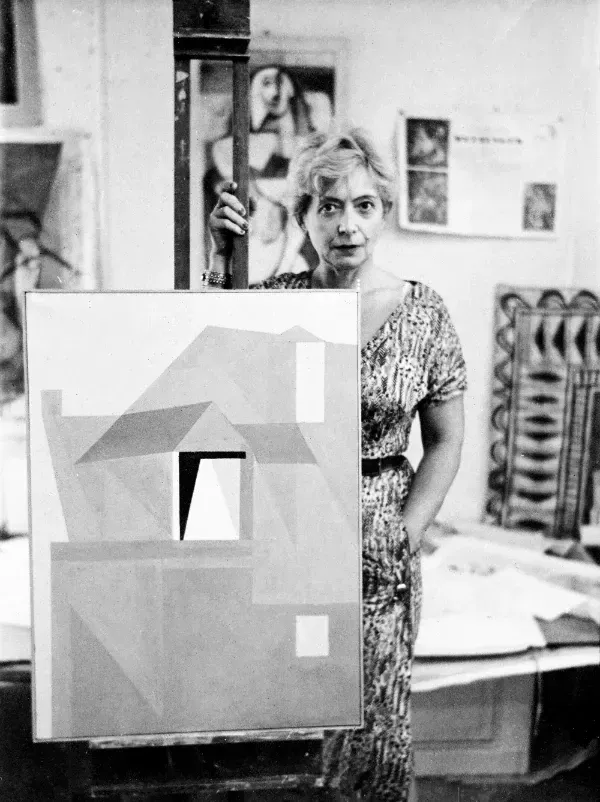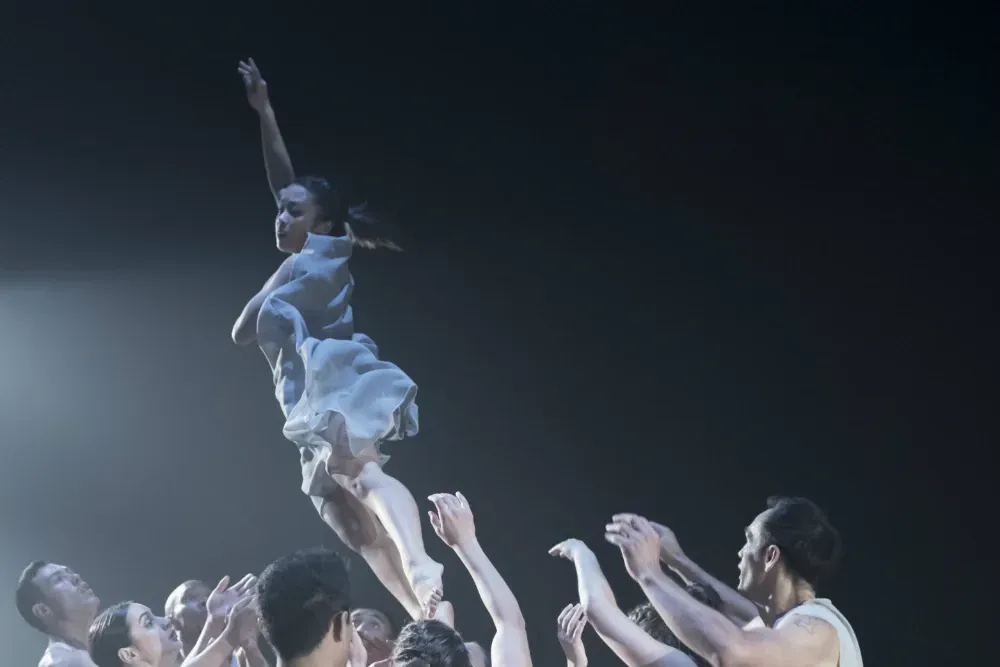Firecracker of artists and thinkers about to go off
Written by
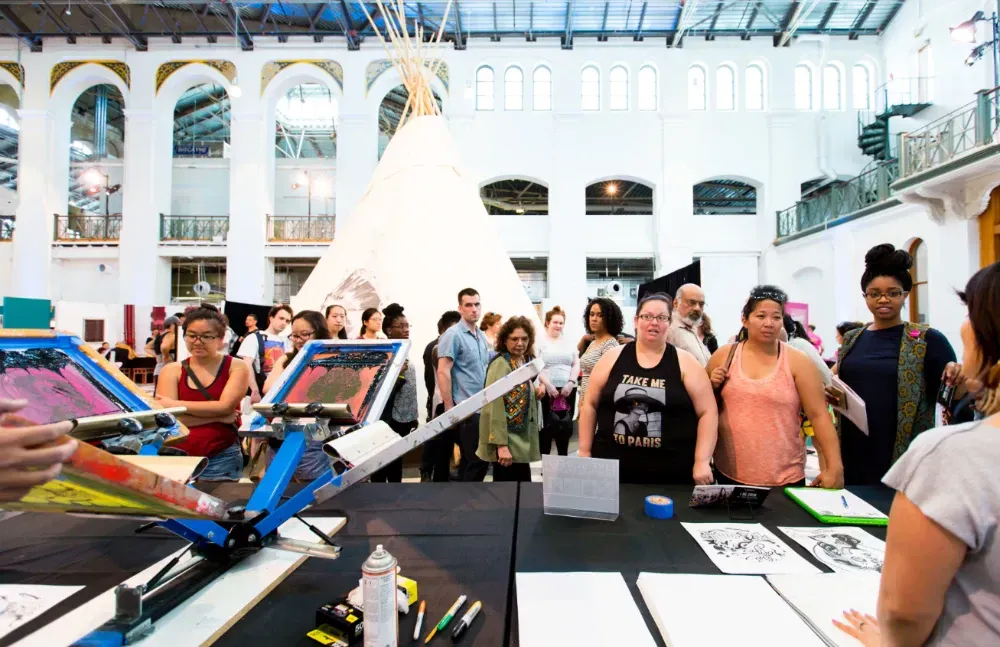
Te Whaianga’s Culture Lab on Civility
This Friday through to Labour Day Monday, Te Whāinga is a free public festival very much of our times. ‘A Culture Lab on ‘Civility’ is being co-presented by the Smithsonian Asian Pacific American Center and Auckland Museum at Auckland’s Silo Park. It involves an array of cracker artists and thinkers from here and overseas in an immersive art exhibition, performance and discussion.
The Smithsonian APA Centre has no public building (there’s no physical address even on their website) and describes itself as a ‘migratory museum’ without walls. Clearly this is an exciting movement across the Pacific.
‘Civility’ is an interesting term to raise at a time of increased calls for more citizen participation and equity in representation. While it has come to mean simply courtesy or politeness, that’s a complexity right there in cultural viewpoint. The word comes from the word “civilis”, which in Latin means "citizen". So we’re talking about how we work and behave towards each other publicly. Down at Auckland’s waterfront artists will examine the term ‘civility’ in parallel to the Tuia 250 commemorations. See the programme at Tewhainga.com.
A culture lab is defined as “community centred museum experiences where kaupapa are shared to nurture collective imagination that prioritize equity, peer to peer learning.” This is the fourth the Centre has done since they began in 2016, and are co-curating with Dina Jezdic from Auckland Museum public programmes. Dina is also behind the Museum’s Late series, and curatorial creative group called Ms Interpreted that “engages with anti-racist, feminist art.”
Laurie Anderson and more
And if you were in any doubt that Wellington’s New Zealand Festival was helping lead change - the festival that set the template which is now being broken - that’s become crystal clear recently. They have announced Laurie Anderson as their third guest curator for 2020, with a programme of six of her works. She joins co-curators Lemi Ponifasio and Bret McKenzie. Lynn Freeman had a long chat with Anderson this last weekend. The festival’s Creative Director Marnie Karmelita introduces Anderson and provides written and video interview here.
Part of changes at NZ Festival, indicating a more collaborative and artist led approach, sees the festival working with literary organisation Verb to create the Writers and Readers Festival. Verb is known for the annual Litcrawl event that has grown bigger and bigger and morphed this year into Verb Writers Festival (6-10 November). Litcrawl (with multiple quick turnaround literary events will be happening in found venues and businesses across the city over one night) is now but one of over 40 events. One participatory innovation is Sarah Laing’s Talking Mural at Te Auaha where from October 27 you get to contribute changing dialogue via submitting text for Laing’s speech bubbles. The Pantograph Punch have posted their picks here.
Verb is one of the first events to use the newly restored and rather beautiful heritage Edwardian Public Trust Hall. It’s a new venue in a city where a lack of them is a big issue. McKee Fehl Constructors’ Maurice Clark bought the Public Trust Building and began re-strengthening and refurbishment post earthquake concerns. Space brokers Urban Dream Brokerage previously trialled it as an events space with various arts groups.
Another change is exciting for the visual arts. For a very long time the capital’s dealer galleries have been excluded from the New Zealand Festival, or been shown little energy in terms of harnessing a distinctive visual arts programme. Word on the street, yet to be announced, is that next year’s festival will include Fired Up, an exhibition of ceramics staged across many of the dealer galleries. There will also be a symposium - a smart meaningful way of networking the commercial gallery community with visitors. The full festival programme is announced November 7.
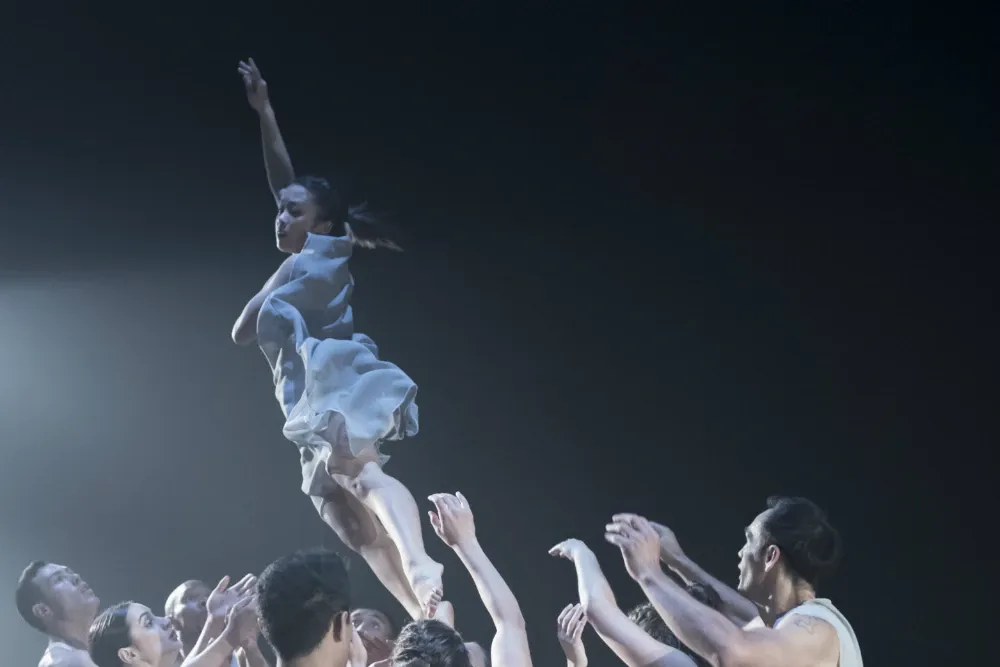
Black Grace in performance.
Black Grace in the US
Just as the New Zealand Dance Company are back from Canada, Black Grace Dance Company have begun a five centre tour of the US. It includes a six-night season at an iconic New York dance venue The Joyce Theater from October 29, with a selection of work from across their 24-year history. Appearing there is a New Zealand first (the venue attracts audiences of 150,000 plus a year!). They are also touring to Boston, Minneapolis, Los Angeles and Maryland before returning to Auckland for a one night performance November 23. Black Grace are no strangers to the US having previously played at The Kennedy Centre in Washington DC, Jacob’s Pillow Dance Festival in Massachusetts and on New York’s 42nd Street. They begin in Maryland and Boston this weekend.
Also crossing the Pacific is Auckland moving image artist Campbell Patterson who is taking up the Fulbright-Wallace Arts Trust Award ten-week artist residency in California, close to San Francisco at the Headlands Center for the Arts.
Curating Changes
A few interesting new movements in art curator positions to note this week. It’s been a long time coming but now finally Auckland Art Gallery is advertising for a Curator Pacific Art to “further increase awareness, understanding and advocacy of Pacific art.” Back in 2012 Home AKL the first major Pacific Art show organised by the gallery was done with guest associate Pacific curators.
One Pacific art curator moving down country meanwhile is Ioana Gordon Smith, who leaves Te Uru in Auckland after four years to start at Pataka in Porirua in November, which you can read about here. Ioana grew up in Porirua, which she thinks is “underrated as a hub of creativity.”
“It's overachieving if you consider how many curators have come from Porirua!”
In Ōtautahi Felicity Milburn has taken over from Lara Strongman (who has headed to the MCA in Sydney) as Senior Curator at Christchurch Art Gallery. The gallery is staying with in-house knowledge: Blair Jackson took over as Director last year after 12 years as deputy director and Milburn has a held a curatorial position at the gallery for more than twenty years. But that also leaves a vacancy for Milburn’s previous position.
Milburn is, with Strongman and Auckland Art Gallery’s Julia Waite, the co-curator of Louise Henderson: From Life, the first major survey of this important 20th century painter. Jointly developed by the galleries it opens in Auckland 2 November and in Christchurch June 2020.
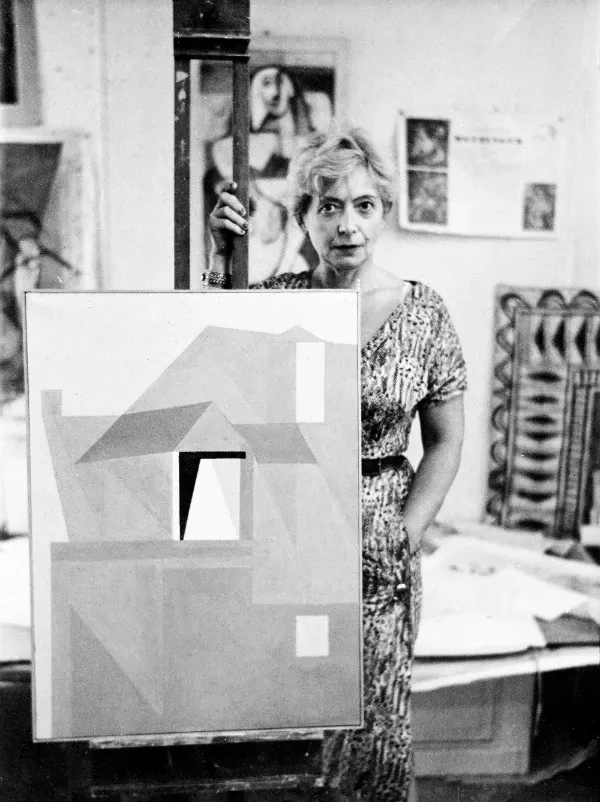
Painter Louise Henderson in her studio circa 1957.
Great Reading
“Some days I’m loading a revolver,” says Elizabeth Knox in her Prime Minister’s Award Speech, “thumbing the brass cases of bullets into the chamber of a gun. More often I’m Mum’s thieving weka, patiently and illicitly moving valuables from one place to another, porch to page in my case. But even though I’m alone and any writing room is the dark depths of night, unlike the weka I’m shifting things from hidden to visible.” The speech is now on Knox’s website.
There’s some strong discussion newly up online at Circuit.org.nz. Writer David Hall and artist Cushla Donaldson are in conversation about the detention by Australia of immigrants under their Immigration Act (including a lot of New Zealand citizens) and about Donaldson’s response, giving them voice in video installation 501s. It’s currently showing in The Shouting Valley at Auckland’s Gus Fisher Gallery. And Tim Corballis writes about the Joyce Campbell shows - On the Last Afternoon: Disrupted Ecologies and the Work of Joyce Campbell and Te Taniwha: The Manuscript of Ārikirangi - that have just closed at the Adam Art Gallery.
This week Adam Art Gallery has announced a 20th anniversary group show involving five projects opening November 6. Included is the first 2012 Mata Aho Collective work (bought by the Victoria University collection, I shudder to realise I can link you to a Dominion Post review I wrote back then), the return to the university of Colin McCahon’s Gate 3 after its exhibition in Auckland, and the first survey exhibition of the work of British painter Christopher Perkins who visited NZ 1929-1933, with a response from Fiona Clark.
The high cost and content of the Power of Inclusion Film Industry Summit has been a talking point for weeks now. A must-read is the now published speech on The Pantograph Punch of Julie Zhu at the summit, which was hosted by the New Zealand Film Commission and Women in Film. Zhu foregrounds it with a discussion of the processes the organisers undertook. Railing that “we’ve reached a point where good intentions aren’t enough" the piece is entitled ‘I’m Sick of Words Like ‘Diversity’, ‘Inclusion’ and ‘Representation’.
“Many of my peers felt frustrated at what potential paths there could be for our communities who sit at the intersections, while the basis of gender equality still dominated the discourse," Zhu writes. “One moderator gave the example of no less than 17 women of colour who had gone up to her after the first day of the conference expressing that often they aligned themselves more with men of colour than with white women, so narratives focused on a singular struggle facing all women felt false and disingenuous.”
From Japan, during Rugby World Cup excitement, here is a Māori Television piece on Tokyo based kapa haka group Ngā Hau E Whā.
Over on Eyeconstactsite.com Andrew Paul Wood is calling Chris McDowall and Tim Denee’s remarkable book of NZ information We Are Here: An Atlas of Aotearoa a work of art.
Finally, a beautiful piece of writing from Dunedin based writer Talia Marshall from North and South about her complex relationship with her father.
